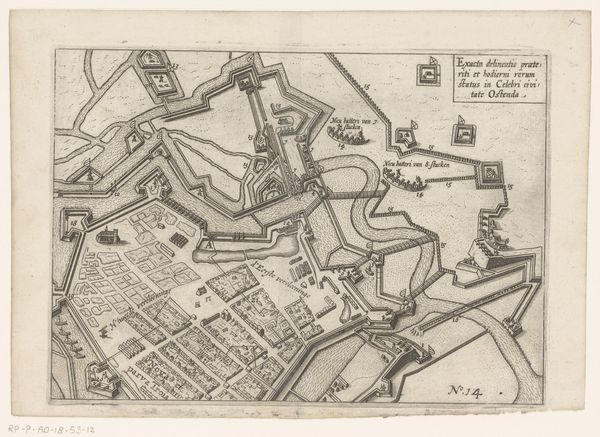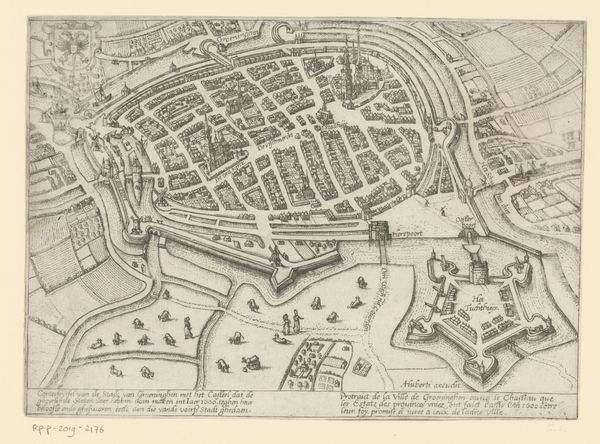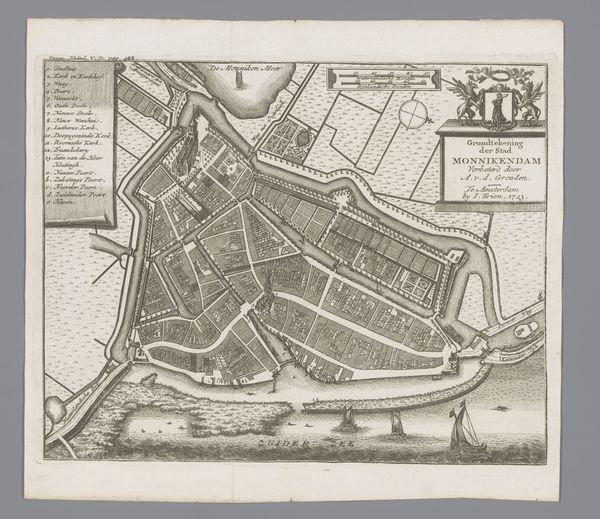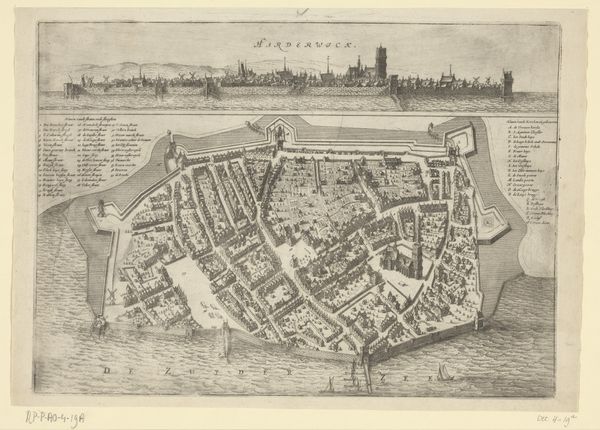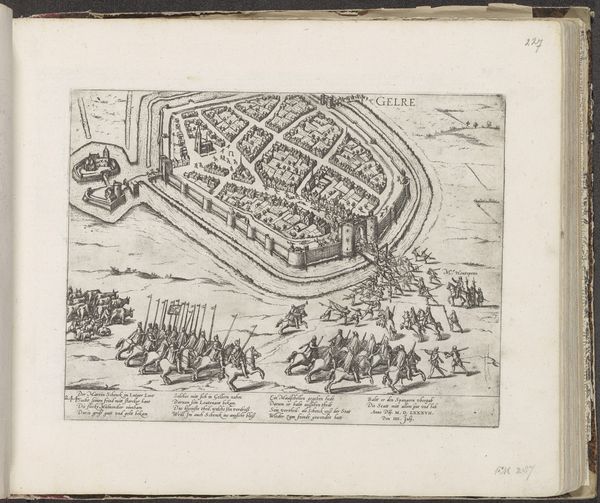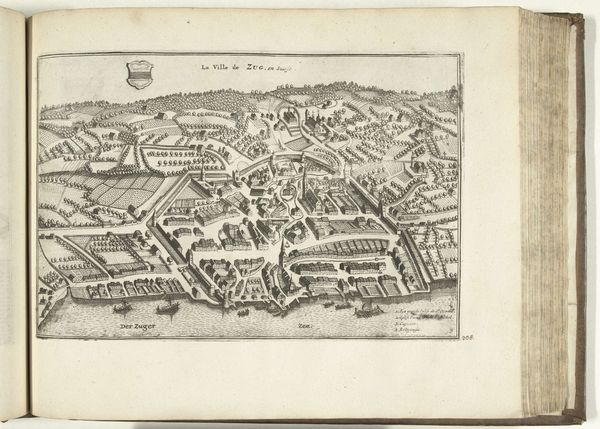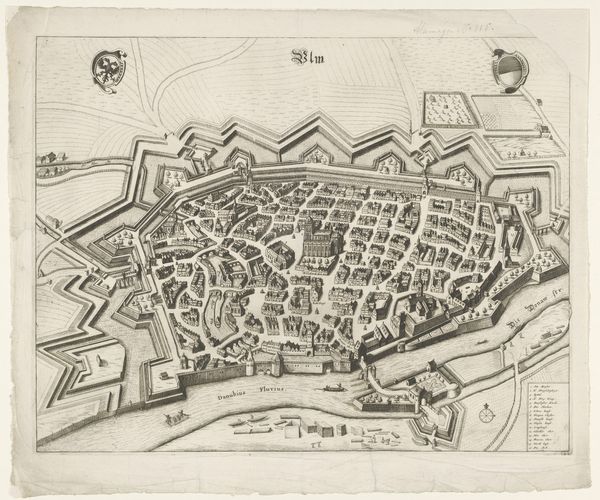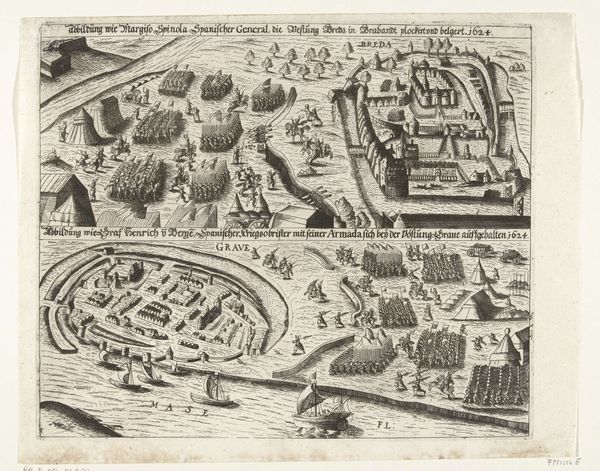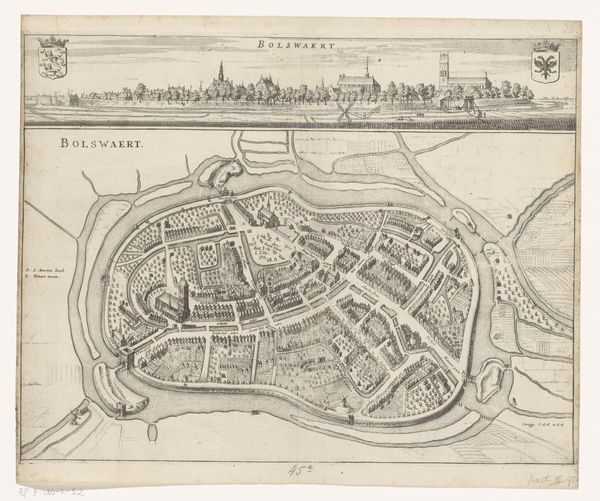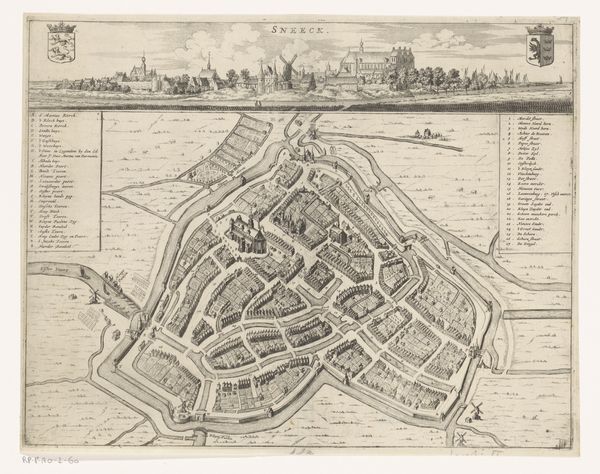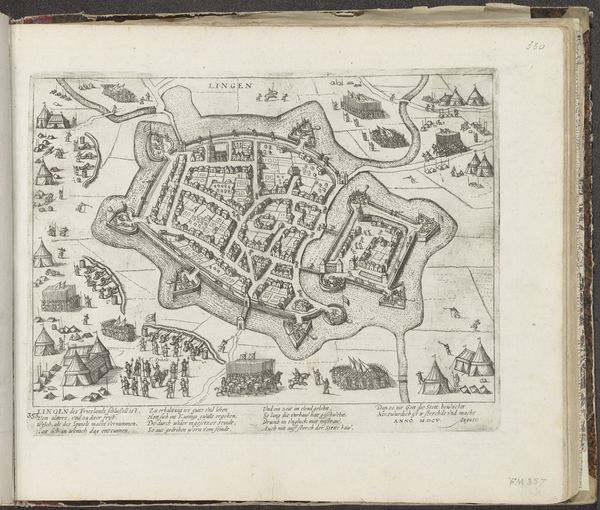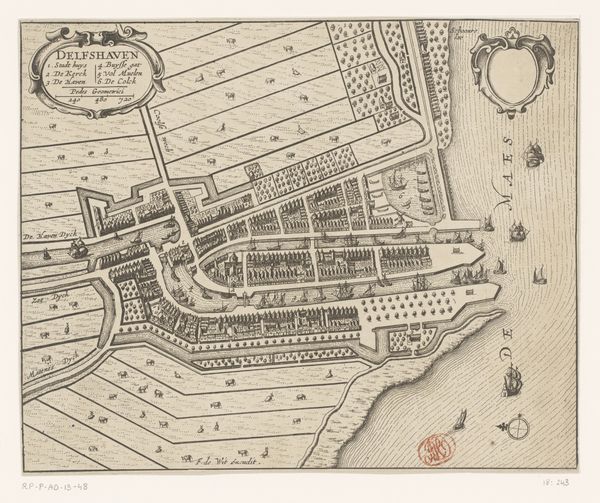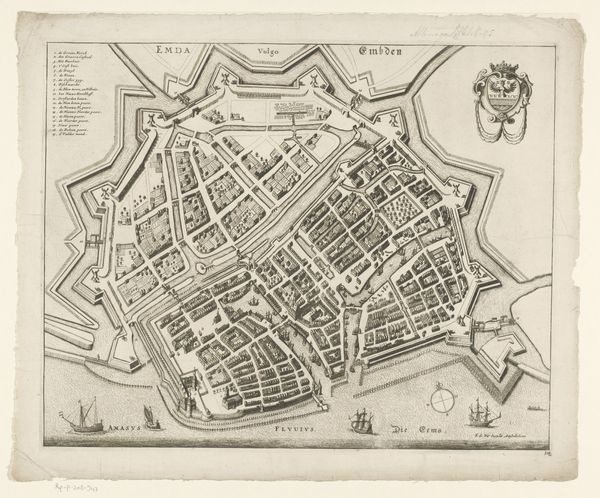
Grote kaart van Antwerpen met de mislukte aanslag in 1605 (blad linksonder) 1569 - 1605
0:00
0:00
drawing, print, ink, engraving
#
drawing
#
pen drawing
#
dutch-golden-age
# print
#
landscape
#
perspective
#
form
#
11_renaissance
#
ink
#
geometric
#
line
#
cityscape
#
history-painting
#
engraving
Dimensions: height 350 mm, width 479 mm
Copyright: Rijks Museum: Open Domain
This print, made by Pieter van der Heyden, shows Antwerp and the failed attack of 1605. It’s an engraving, a process where the artist uses a tool called a burin to carve lines directly into a metal plate, which is then inked and printed. The density of those lines gives the print its descriptive power. Look closely, and you can see how van der Heyden varies their thickness and spacing to create different tones and textures. The sheer amount of labor is remarkable: all those tiny marks, each one deliberate and controlled. Engraving was closely linked to the rise of print culture. It allowed for the mass production of images, making information and artistry available to a wider audience. This particular print not only shows a specific event, but also reflects the broader social and political context of its time, where cities were rapidly changing, and their defenses becoming ever more crucial. Paying attention to the materials and processes involved gives us a deeper appreciation for the artist's skill, and the cultural significance of printmaking itself.
Comments
No comments
Be the first to comment and join the conversation on the ultimate creative platform.
